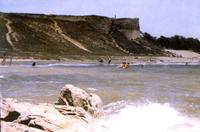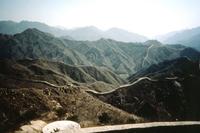You are in: Asia -> China -> The Great Wall, and traditional search or Image Gallery will yield results of this site only
The Great Wall
| Site number: | 438 |
|
| Type of site: | Cultural | |
| Date: | 220 B.C. | |
| Date of Inscription: | 1987 | |
| Location: | Asia, China, Liaoning, Jilin, Hebei, Beijing, Tianjin, Shanxi, Inner Mongolia, Shaanxi, Ningxia | |
| Video: |
|
Up to 75 images are shown here. Click on each for more details or on Image Gallery for more images.
Six official UN languages:
Arabic,
Chinese,
English,
French,
Russian,
Spanish
Other languages: Albanian, Basque, Bengali, Bosnian, Breton, Bulgarian, Catalan, Croatian, Czech, Danish, Dutch, Esperanto, Estonian, Farsi, Finnish, Galician, Georgian, German, Greek, Hebrew, Icelandic, Indonesian, Italian, Japanese, Korean, Kurdish, Lithuanian, Macedonian, Malay, Malayalam, Min Nan, Norman, Norwegian-bokmål, Norwegian-nynorsk, Occitan, Polish, Portuguese, Serbian, Slovak, Swedish, Tamil, Thai, Turkish, Ukrainian, Vietnamese, Welsh
Other languages: Albanian, Basque, Bengali, Bosnian, Breton, Bulgarian, Catalan, Croatian, Czech, Danish, Dutch, Esperanto, Estonian, Farsi, Finnish, Galician, Georgian, German, Greek, Hebrew, Icelandic, Indonesian, Italian, Japanese, Korean, Kurdish, Lithuanian, Macedonian, Malay, Malayalam, Min Nan, Norman, Norwegian-bokmål, Norwegian-nynorsk, Occitan, Polish, Portuguese, Serbian, Slovak, Swedish, Tamil, Thai, Turkish, Ukrainian, Vietnamese, Welsh
| Description: | To form a united defence system against invasions from the north in c. 220 B.C., under Qin Shi Huang, sections of earlier separate fortifications were joined together. The construction persisted until the Ming dynasty (1368–1644), at which time the Great Wall became the world's largest military structure. The site’s historic and strategic magnitude is matched only by its architectural significance. --WHMNet paraphrase from the description at WHC Site, where additional information is available. For 360 degree imaging of this site, click here. | |
| The Great Wall of China (Simplified Chinese: 长城; Traditional Chinese: 長城; pinyin: Chángchéng; literally "Long wall") or (Simplified Chinese: 万里长城; Traditional Chinese: 萬里長城; pinyin: Wànlǐ Chángchéng; literally "The long wall of 10,000 Li (里)") is a series of stone and earthen fortifications in China, built, rebuilt, and maintained between the 5th century BC and the 16th century to protect the northern borders of the Chinese Empire during the rule of successive dynasties. Several walls, referred to as the Great Wall of China, were built since the 5th century BC, the most famous being the one built between 220 BC and 200 BC by the first Emperor of China, Qin Shi Huang. That wall was much farther north than the current wall, built during the Ming Dynasty, and little of it remains. The Great Wall is the world's longest human-made structure, stretching over approximately 6,400 km (4,000 miles) from Shanhai Pass in the east to Lop Nur in the west, along an arc that roughly delineates the southern edge of Inner Mongolia. It is also the largest human-made structure ever built in terms of surface area and mass. --Wikipedia. Text is available under the Creative Commons Attribution-ShareAlike License. For 360 degree imaging of this site, click here. | ||
| Source: | http://whc.unesco.org/en/list/438 | |
| Source2: | http://whc.unesco.org/en/list/438/video | |
| Source3: | http://memorynet.org | |
| Reference: | 1. UNESCO World Heritage Center, Site Page. 2. Ching-chih Chen's Global Memory Net. | |


 Videos from The First Empreor of China by Ching-chih Chen
Videos from The First Empreor of China by Ching-chih Chen









































































